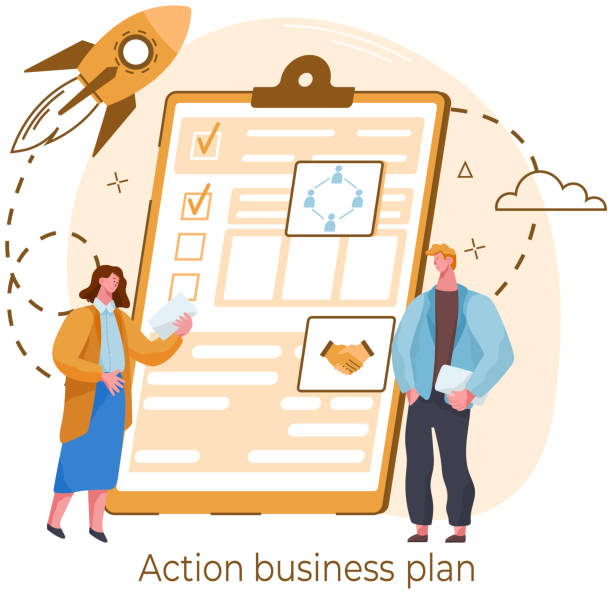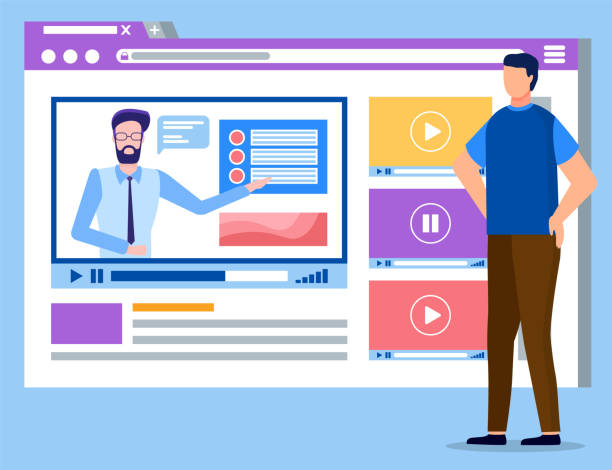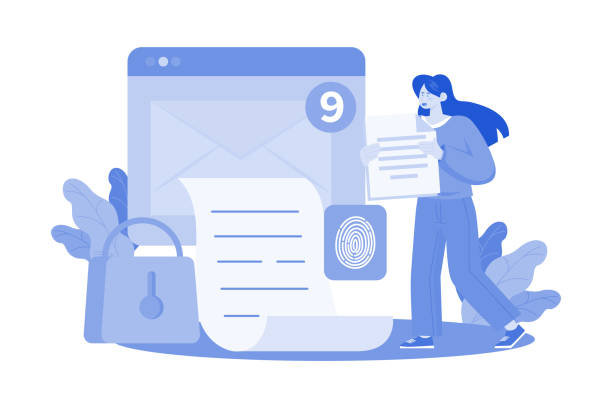Introduction to Fast Website Design and Its Necessity

In today’s digital world, speed is paramount.
Imagine entering a store and having to wait for hours to find your desired product; it certainly wouldn’t be a pleasant experience.
The same scenario applies to websites.
Fast website design is no longer a competitive advantage; it’s a vital necessity.
Today’s users are more impatient than ever and expect web pages to load in a fraction of a second.
Numerous studies have shown that even a one-second delay in page load can significantly reduce conversion rates and lead to an increase in bounce rates.
Therefore, businesses aiming for success in the online space must prioritize website speed optimization.
This issue not only directly impacts user experience (UX) but is also a crucial factor in website ranking on search engines like Google.
#LoadSpeed, #UserExperience, and #SEO are the three main pillars upon which fast website design is built.
In the following, we will delve deeper into each of these factors and solutions for achieving a high-speed website to assist you on your path to rapid web development.
Our goal in this article is to provide a comprehensive explanatory and educational content to show you the importance and methods of achieving an optimally performing website.
Are you tired of your company’s website failing to meet your expectations? With Rasavob, design a professional website that truly represents your business.
✅ Increase new customer acquisition and sales leads
✅ Enhance your brand’s credibility and trust among your audience
⚡ Get a free website design consultation!
Key Factors Affecting Website Speed

Website load speed is a function of various factors, each of which can have a significant impact on overall performance.
To achieve fast website design, understanding and optimizing these factors is essential.
The first and most important factor is the quality of hosting.
Choosing a powerful and optimized host with robust servers and sufficient bandwidth forms the foundation of a high-speed website.
Inexpensive shared hosts often have limited resources, which can lead to website sluggishness.
The second factor is the quality of coding and its optimization.
Messy code, unnecessary JavaScript and CSS without compression, all can increase load times.
Compressing these codes and removing redundant items is an important step towards fast website design.
Images and multimedia files are also other important factors.
High-volume and unoptimized images occupy a significant portion of the load time.
Using appropriate formats (such as WebP), compression, and lazy loading (بارگذاری تنبل) images, will have a tremendous impact on speed.
Furthermore, the number of HTTP requests to the server and its response time are also of high importance.
The fewer files the browser has to load to display the page, the higher the load speed will be.
This section includes an educational analysis that introduces you to the various dimensions affecting speed and helps you gain a better understanding of how a fast website performs.
Technical Solutions for Speed Optimization and Performance Improvement

To achieve fast website design, implementing advanced technical solutions is essential.
One of the most important solutions is the use of caching.
Caching allows browsers or servers to store copies of website content so that there’s no need to reload it from the server on subsequent visits.
This significantly reduces load times.
Using a Content Delivery Network (CDN) is another solution that provides content from the geographically closest server to the user by storing copies of your website across various servers, thereby minimizing network latency.
Code compression (Minification) and combining CSS and JavaScript files to reduce the number of HTTP requests are other fundamental techniques in website speed optimization.
Implementing Lazy Loading for images and videos, meaning content is only loaded when it enters the user’s viewport, reduces initial page load and improves initial speed.
Table 1: Technical Solutions for Website Speed Optimization
| Solution | Description | Impact on Speed |
|---|---|---|
| Browser and Server Caching | Storing a copy of content for faster access on subsequent visits. | Significant reduction in load time for returning visitors. |
| Code Minification | Removing extra characters (white spaces, comments) from HTML, CSS, JS files. | Reduces file size and transfer time from the server. |
| Using CDN (Content Delivery Network) | Delivering content from the nearest server to the user. | Reduces network latency and globally improves load speed. |
| Lazy Loading Images and Videos | Loading visual content only when needed (when it enters the user’s viewport). | Improves initial page load speed and saves bandwidth. |
These solutions, which have a specialized and guidance aspect, not only optimize speed but also help improve SEO ranking and overall user experience.
Server optimization, including enabling GZIP compression and optimal database settings, is also among the important measures that rapid web development teams should pay attention to.
The Role of Content and Images in Website Load Speed

Content and images are an integral part of any website, but if not managed correctly, they can become one of the biggest obstacles on the path to fast website design.
High-resolution and large-volume images can add hundreds of kilobytes or even megabytes to the page size, significantly increasing load time.
To counter this problem, the use of optimized image formats like WebP, which offer better compression, is highly recommended.
In addition, online image compression tools or WordPress plugins can reduce image size without significant loss of quality.
It’s important to resize images to fit the display dimensions on your website; loading a 4000-pixel image to display in a 200-pixel box is unnecessary and inefficient.
Videos, due to their large size, can also be a speed bottleneck.
Instead of directly uploading videos, it’s better to use services like YouTube or Vimeo and embed the video on your site.
This approach offloads the main video content loading to those services’ servers and prevents imposing pressure on your website’s server.
Even web fonts can impact speed; optimizing them and limiting the number of fonts can be helpful.
This section of the article, with an explanatory and educational approach, focuses on the importance of content optimization in the journey of rapid web development.
Are you tired of losing customers due to poor e-commerce website design? With Rasavob, solve this problem permanently!
✅ Significant increase in sales and visitor-to-customer conversion rate
✅ Smooth and engaging user experience for your customers⚡ Get a free consultation
User Experience and Its Connection to Website Speed
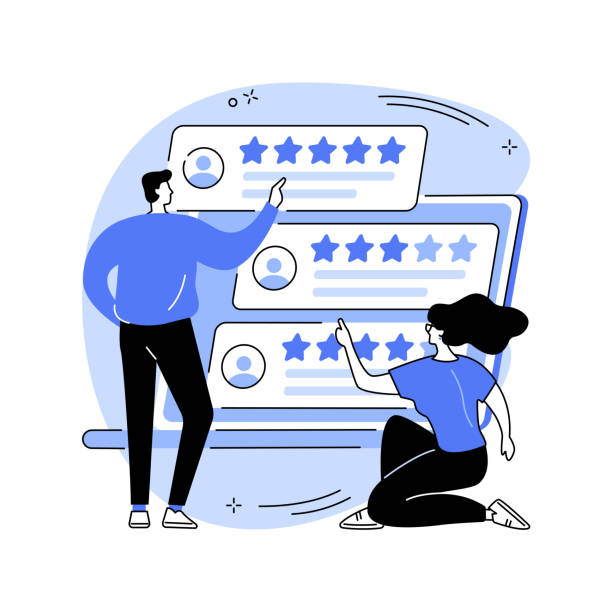
Have you ever considered how a slow website can affect your visitors’ emotions and decisions? The relationship between user experience (UX) and website speed is a direct and undeniable one.
A fast website creates a sense of satisfaction and trust in the user.
When a page loads instantly, the user can browse content without interruption, which means a smooth and enjoyable user experience.
In contrast, a slow website leads to user frustration and impatience.
The Bounce Rate, which indicates the percentage of visitors who leave your site after viewing only one page, has an inverse relationship with load speed.
The slower the site, the higher the bounce rate.
This not only means losing visitors but also has negative consequences for your site’s SEO, as search engines evaluate websites with high bounce rates as less useful.
A fast website design not only increases user retention on the site but also significantly raises the likelihood of desired actions (such as purchasing, signing up, or contacting).
This section, by providing thought-provoking and analytical content, compels you to think more deeply about the importance of speed from the user’s perspective.
Companies like Amazon and Google have repeatedly shown that improving load speed by a fraction of a second can add millions of dollars to their revenue.
This clearly demonstrates that fast website design is a vital investment in customer experience.
Business Benefits of Fast Website Design for Businesses
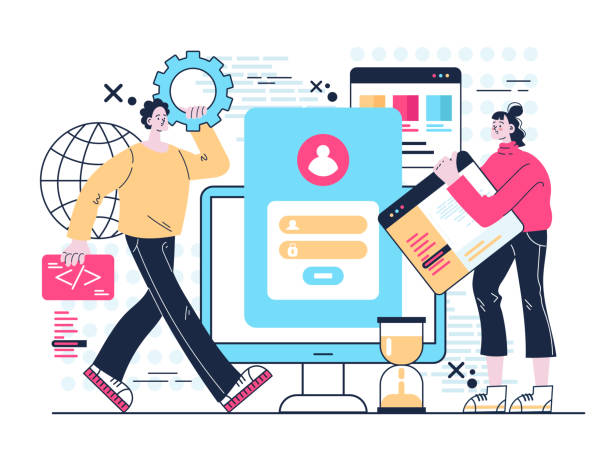
In today’s competitive online business landscape, every advantage can be the difference between success and failure.
Fast website design brings numerous business benefits to companies that go beyond merely a better user experience.
The first and most important benefit is improved SEO and search engine rankings.
Google has explicitly stated that website speed is an important factor in its ranking algorithm.
Faster websites achieve better rankings, attract more organic traffic, and consequently increase their online visibility.
The second benefit is an increase in conversion rates.
When users don’t have to wait for pages to load, they are more likely to complete the purchasing process, registration, or form submission.
This means increased sales and revenue for businesses.
Reducing bounce rates and increasing user dwell time on the site not only helps SEO but also indicates greater user engagement with your content.
This increased engagement can lead to improved branding and customer loyalty.
Finally, a high-speed website allows businesses to offer a better mobile experience.
Given the ever-increasing use of mobile devices to access the internet, optimizing speed for mobile devices is crucial.
This section of the article, with an analytical and news-oriented perspective, highlights the strategic importance of fast website design for business growth and success.
Common Mistakes That Slow Down Your Website

On the path to achieving a fast website design, avoiding some common mistakes is crucial.
Many websites face speed issues due to neglecting these points.
The first and perhaps most important mistake is choosing unsuitable hosting.
Using shared hosting with limited resources or servers that are insufficient for your traffic can severely damage website speed.
Poor hosting, even with the best coding and optimization, cannot provide optimal performance.
The second mistake is using unoptimized images.
As previously mentioned, high-volume and disproportionately sized images are one of the biggest causes of website slowdowns.
Many web designers and managers directly upload images without compression or resizing.
The third common mistake is installing too many plugins or extensions, especially in content management systems like WordPress.
Each new plugin adds its own CSS and JavaScript code to the website, which can increase the number of HTTP requests and slow down load times.
Lack of code compression and Minification (HTML, CSS, JavaScript) is another mistake that unnecessarily keeps file sizes high.
Not using caching and CDN is also considered a fatal mistake, as these techniques dramatically improve speed.
This section, with a guidance and specialized approach, keeps you safe from the pitfalls of these common mistakes to help you achieve a high-speed website.
Table 2: Common Web Design Mistakes That Reduce Speed
| Common Mistake | Impact on Speed | Suggested Solution |
|---|---|---|
| Weak and unsuitable hosting | Slow server response, limited bandwidth, insufficient resources. | Choose quality hosting, dedicated or VPS with sufficient resources. |
| Unoptimized images (high volume and dimensions) | Significant increase in overall page size, increased load time. | Compression, appropriate resizing, use of next-gen formats (WebP), Lazy Loading. |
| Excessive plugins and add-ons | Increased HTTP requests, added extra code, and conflicts. | Only use essential and quality plugins, remove unnecessary ones. |
| Messy and uncompressed code | Increased size of CSS and JavaScript files, more processing by the browser. | Minification and combining CSS and JS files. |
The Future of Web Design and New Technologies for Speed
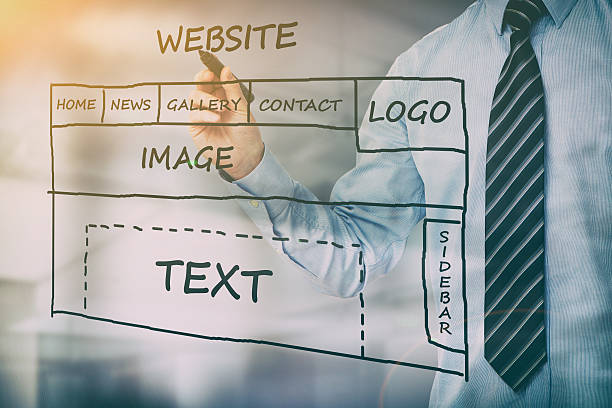
The web world is constantly evolving, and new technologies continuously emerge to improve performance and speed.
Understanding these trends is vital for anyone looking for fast website design.
One of the most important developments is the introduction of Core Web Vitals by Google, which evaluates a set of user experience metrics (such as load speed, interactivity, and visual stability) and increasingly impacts SEO rankings.
This pushes developers towards deeper and more comprehensive optimization.
New architectures like Headless CMS (Content Management System without a head) and Serverless Architecture are also gaining popularity.
Headless CMS allows developers to manage content separately from the presentation layer, which provides greater flexibility and faster load speeds for the front-end.
Serverless architecture, by eliminating the need for server management, offers high scalability and faster response times.
Advanced technologies such as Artificial Intelligence (AI) and Machine Learning are also entering the realm of web optimization.
AI-based tools can automatically compress images, optimize code, and even predict user behavior to pre-load content.
These novel approaches promise a future where rapid web development will reach unprecedented levels of efficiency and responsiveness.
This section, by providing news-oriented and engaging information, offers a glimpse into the high-speed future of websites.
Worried about losing customers because you don’t have a professional e-commerce website?
With e-commerce website design by Rasavob, forget these worries!
✅ Significant increase in sales and visitor-to-customer conversion rate
✅ Professional and user-friendly design that builds customer trust
⚡ Get a free consultation from Rasavob
Choosing the Best Approach for Fast Website Design
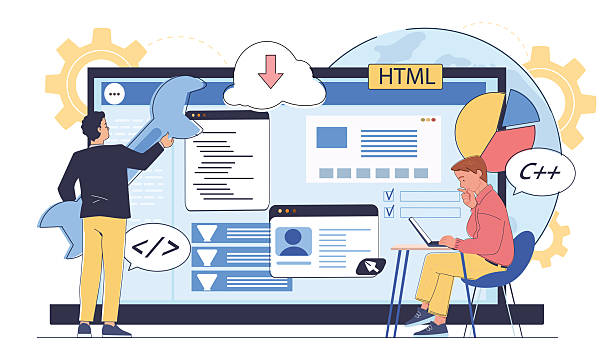
After understanding the importance and techniques for achieving a high-speed website, the question is: how can the best approach for fast website design be chosen? This decision depends on multiple factors, including budget, business needs, and internal expertise level.
For small and medium-sized businesses looking for a cost-effective solution, using Content Management Systems (CMS) like WordPress with speed optimization plugins and suitable hosting can be a good starting point.
However, it is important to be careful in choosing themes and plugins to prevent imposing an excessive load on the site.
For larger companies or high-traffic websites, investing in custom rapid web development or using modern JavaScript frameworks (such as React, Vue, Angular) that have high optimization capabilities is recommended.
These approaches require higher technical expertise and are usually more costly, but they offer greater flexibility and control over site performance.
The key point in any approach is prioritizing speed from the very initial stages of design.
This means considering optimization for Core Web Vitals, selecting optimized images, and using a CDN from the outset, rather than trying to fix speed issues after the site has launched.
Choosing a web design partner who has deep knowledge in speed optimization and uses performance testing tools can ensure your success in achieving a fast website.
This section, with its guidance and specialized content, helps you choose the right path.
Conclusion and Practical Steps for a High-Speed Website

Throughout this article, we emphasized the vital importance of fast website design in today’s digital ecosystem.
From its impact on user experience and SEO to the business benefits it brings to companies, speed is no longer an optional feature but a fundamental pillar for online success.
We explored the key factors affecting speed, technical solutions, the role of content and images, and common mistakes to avoid.
We also touched upon the future of web design and emerging technologies that will elevate speed to new levels.
To summarize and provide practical steps, it is recommended to:
- Choose your hosting carefully: Investing in quality hosting tailored to your traffic needs is the first step.
- Optimize images: Use appropriate formats, compression, and Lazy Loading.
- Compress and optimize code: Use Minification for CSS and JavaScript and remove unnecessary code.
- Activate caching and CDN: These two techniques make a significant difference in speed.
- Limit the number of plugins and extensions: Only use essential ones and remove redundant items.
- Regularly test your website: Use tools like Google PageSpeed Insights to monitor performance.
- Pay attention to Core Web Vitals: These metrics are good guidelines for improving user experience and speed.
By implementing these steps, you can transform your website into a high-speed platform that not only satisfies visitors but also contributes to the growth and success of your business.
This final section, by providing explanatory and guidance content, completes your roadmap for achieving a high-speed website.
Frequently Asked Questions
| Question | Answer |
|---|---|
| What does fast website design mean? | Optimizing a website for fast page loading in users’ browsers, which leads to a better user experience and higher search engine rankings. |
| Why is website load speed important? | Increases user satisfaction, reduces Bounce Rate, improves SEO, and boosts conversion rates, as users expect websites to open quickly. |
| What factors affect website speed? | Image size, unoptimized coding (CSS, JS, HTML), inappropriate hosting choice, lack of caching, high number of HTTP requests, and not using a CDN. |
| How can website load speed be improved? | Compressing images, optimizing and compressing code, using caching, enabling Gzip compression, using a CDN, and choosing powerful hosting. |
| What is a CDN and how does it help website speed? | A CDN (Content Delivery Network) stores website content on various geographical servers and delivers content from the closest server to the user, which reduces load time. |
| How significant is hosting’s role in website speed? | Very significant. Powerful and suitable hosting with sufficient resources, high bandwidth, and optimized servers forms the foundation of a website’s speed. |
| How does image optimization affect website speed? | Images are usually the heaviest part of a web page. Compressing and optimizing them without significant quality loss drastically reduces page size and increases load speed. |
| Does website speed affect SEO? | Yes, Google and other search engines consider website speed as one of the ranking factors. Faster websites have a better chance for higher rankings. |
| What tools are available for measuring website speed? | Google PageSpeed Insights, GTmetrix, Pingdom Tools, and Lighthouse, each providing reports and suggestions for speed improvement. |
| How does Caching help website speed? | Caching stores static site content for users’ subsequent visits. Consequently, the browser doesn’t need to re-download all content, and pages load much faster. |
And other services of Rasavob Advertising Agency in the field of advertising
Smart Direct Marketing: A blend of creativity and technology for online growth through attractive UI design.
Smart Custom Software: An effective tool to increase sales by customizing user experience.
Smart Digital Advertising: A fast and efficient solution for campaign management focusing on marketing automation.
Smart UI/UX: A fast and efficient solution for online growth focusing on SEO-driven content strategy.
Smart Custom Software: Transform digital branding with the help of attractive UI design.
And over a hundred other services in the field of internet advertising, advertising consultation, and organizational solutions
Internet Advertising | Advertising Strategy | Advertorials
Resources
Website Speed Optimization, Fast Website Design, Importance of Website Speed, Website Speed and SEO
? Ready to revolutionize your business in the digital world? Rasavob Afarin Digital Marketing Agency, by providing comprehensive solutions, from e-commerce website design to search engine optimization and social media management, paves the way for your online success. Contact us today and transform the future of your business.
📍 Tehran, Mirdamad Street, next to Bank Markazi, Kazeroon South Alley, Ramin Alley No. 6

